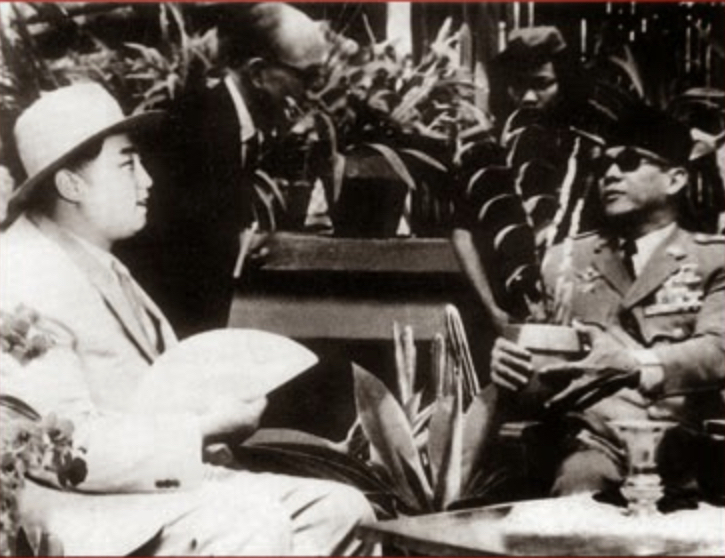The Peninsula
North Korea and the Third World: Historical Origins

By Stephan Haggard
A review of Guns, Guerillas and the Great Leader by Benjamin Young (Stanford University Press, 2021)
A recent trend in the diplomatic history of the postwar period is to de-center the focus on the major powers and pay more attention to how developing countries forged relations with one another. Reflective of this new trend, there is a new interesting history of North Korean foreign policy by Benjamin Young recently published by Stanford University Press entitled Guns, Guerillas and the Great Leader. Although not carrying the history to the present (as historical sources dry up), Young nonetheless shows that North Korea’s ties to the developing world have complex ideological and historical roots. The book tracks how North Korea gravitated over time to states that were not only revolutionary and Third Worldist, but also extreme authoritarians: the Ugandas, Somalias, Cambodias and Syrias.
Many historians have highlighted how Kim Il Sung managed to rely heavily on both China and the Soviet Union without toeing the line of either. Young adds texture to this narrative by portraying Kim Il Sung as seeking to position North Korea on the international stage not only—or even primarily—as a member of the socialist bloc, but as a model for the Third World as well. Correspondingly, early diplomatic efforts from the mid-1950s included the establishment of relations with leaders of the Non-Aligned Movement like Indonesia’s Sukarno; the two leaders reciprocated state visits. Young shows how Kim Il Sung also offered material support for Indonesia’s konfrontasi with Malaysia and for insurgents in Mexico and Ceylon from the mid-1960s.
Following Kim Il Sung’s consolidation of power in the late-1950s, but particularly after the development of the monolithic ideological system of the late-1960s, North Korea also began its quixotic efforts to push Kimilsungism abroad. In an amusing section, Young outlines how strapped local newspapers in Africa would willingly take North Korean money to publish long, sycophantic pull-out sections even as the diplomatic corps of the countries in question had little patience for Pyongyang’s propagandistic excesses. These efforts culminated in the formation of Friendship Societies, the activities of which are still reported in Rodong Sinmun.
As South Korea took off economically starting in the mid-1960s, diplomatic efforts in the developing world took on new urgency, not only to compete with the South for potential UN votes but as a source of hard currency as well. North Korea was finally granted admission to the Non-Aligned Movement in 1975, to Kissinger’s consternation, just as juche was being articulated as a distinctive ideological export. While dispensing small amounts of aid to as many as twenty African countries by the end of the 1970s, North Korean construction crews were also building palaces for the likes of Central African autocrat Bokassa. The country also began its covert trafficking of military hardware during this time.
In a chapter on the early 1980s, Young provides interesting insight into how Kim Jong Il’s insecurities likely lead to some of the more costly foreign policy excesses of the regime, including the efforts to stage mass games in Africa and the Rangoon bombing of 1983. Young argues that the action in Burma was costly, and just as South Korea was gearing up for its debut on the world stage with the hosting of the 1988 Olympics. The contrast between the Olympics—which significantly changed perceptions of South Korea in both socialist and developing countries—and North Korea’s hosting of the World Festival of Youth and Students in 1989, could not be more telling. Young details how students coming to Pyongyang from Europe scratched their heads at the anachronistic nature of the North Korean system and its over-the-top efforts to control visitors.
Young draws on an incredible array of archival, other primary and secondary sources in weaving his story of North Korea’s efforts to project a Third Worldist image. The book is also sprinkled with poster art, almost all of which is built around themes of solidarity. As the ideological appeal of the country fell away, however, connections forged during the earlier period covered by Young continued to pay off in military sales, security training, construction and labor exports. Young concludes by noting that these ties have frayed since the tightening of the sanctions regime in 2017. But he adds that this probably means that relationships have simply been forced deeper into the gray zone, including with states such as Syria that have little to lose.
Stephan Haggard is a Non-Resident Fellow at the Korea Economic Institute and the Lawrence and Sallye Krause Professor of Korea-Pacific Studies, Director of the Korea-Pacific Program and distinguished professor of political science at the School of Global Policy and Strategy University of California San Diego.
Picture from Wikimedia Commons
